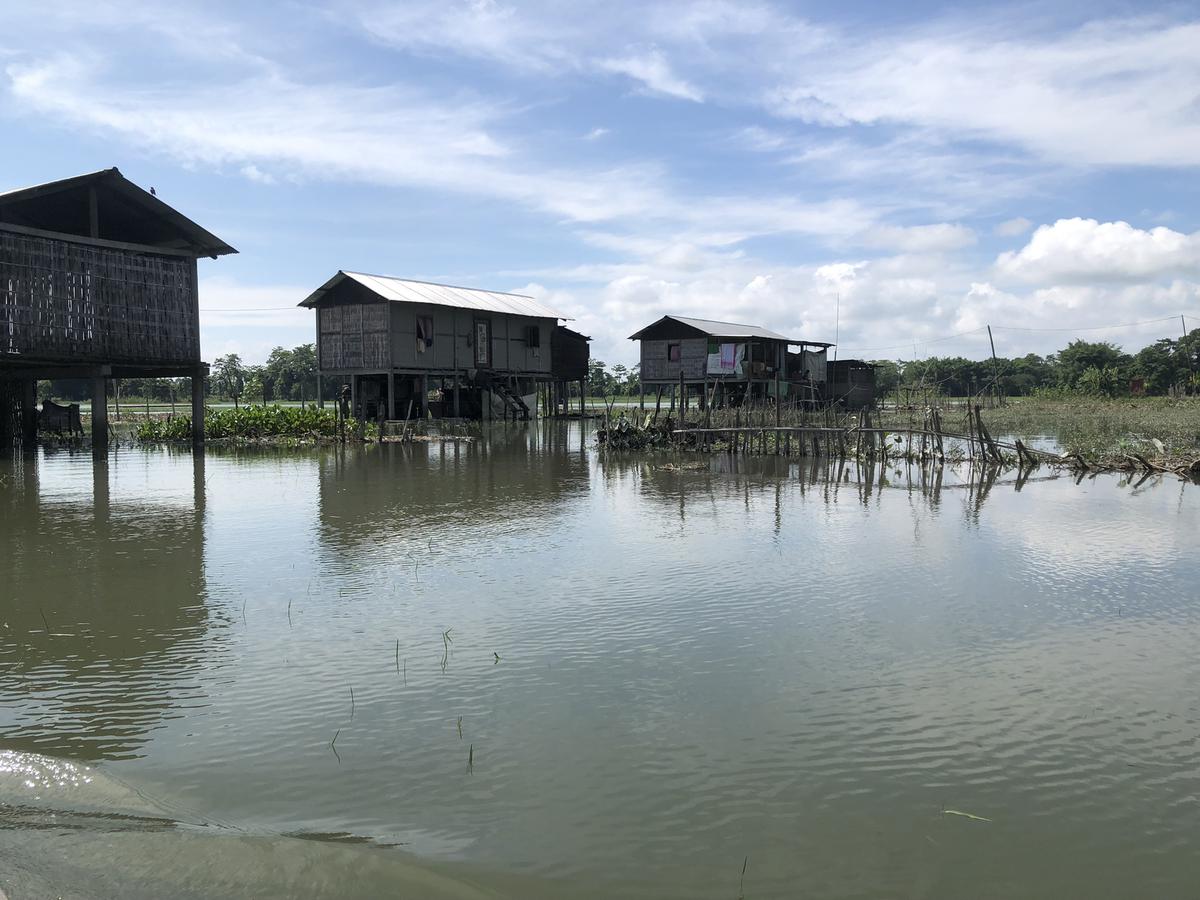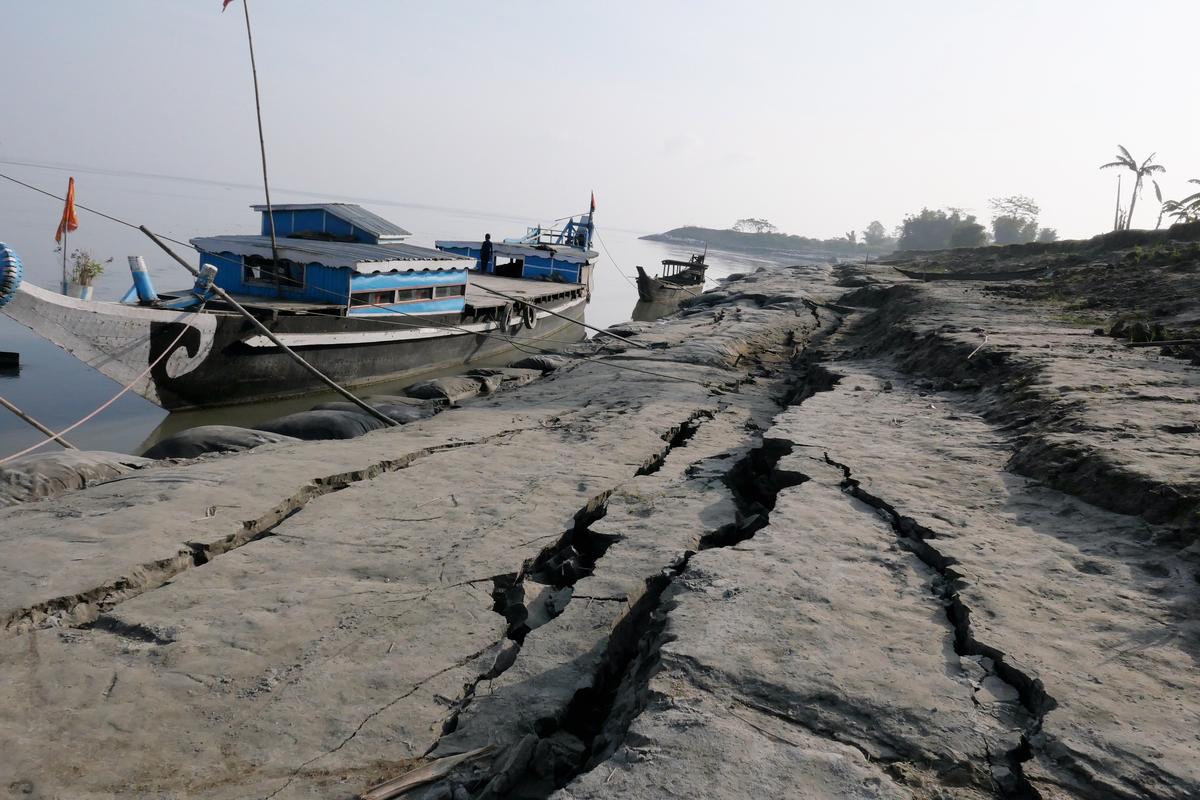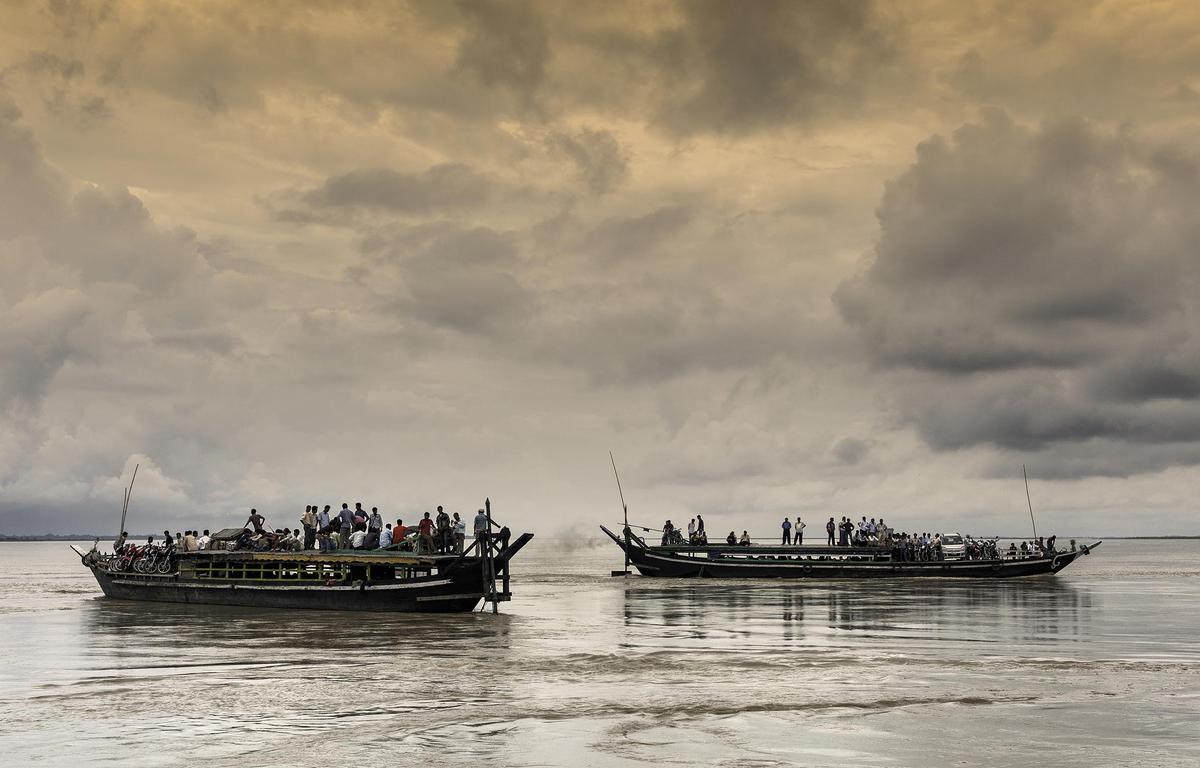Mitul Baruah | photo credit: special arrangement
Mitul Baruah, who teaches sociology, anthropology and environmental studies, was born and brought up in Assam’s Majuli, one of the largest river islands in the world. His recent book, slow disaster, highlights the challenges faced by the island’s residents, from flooding, river bank erosion to displacement and the role of the state. Excerpts from an interview:

The Brahmaputra river and its challenges have been written about, but being born and brought up in Majuli, what are you highlighting in your book?
Scholarship on the environmental crisis facing the Brahmaputra valley has been grossly inadequate, ignoring some key aspects of the threat scene. My book is an attempt to take this literature forward. slow disaster Presents an ethnographic account, of how the twin processes of flood and river bank erosion have reshaped the Majuli landscape and by extension the Brahmaputra valley. Such an ethnographic study helps us gain a deeper understanding of how disasters unfold on the ground, how people’s daily lives are reshaped in the process, and how they deal with such disasters. . Being a native of Majuli, I was also able to combine the ethnography with my personal insights on the island.

Daily visuals of floods in Salmora. , photo credit: special arrangement
Why do you call this a ‘slow disaster’?
Through Majuli’s story, the book presents a conceptual framework of “slow disasters” – disasters that are incremental, rapid and non-spectacular. Unlike catastrophic events such as tsunamis or earthquakes, slow disasters occur in quiet, everyday ways that often go unnoticed. In Majuli, the devastation has been enormous – in terms of loss of land (about 600 km² during the 20th century), displacement and migration of families, and collapse of traditional livelihoods. Yet none of this has been dramatic; Rather, they have happened slowly and quietly, over a long period of time. The book argues that slow disasters require careful spatio-temporal analysis.
Can you describe Majuli as it is now?
Majuli looks quite different today than it did a few decades back. Believed to be the largest river island in the world, it is largely rural and agricultural. However, the loss of land due to regular flooding and erosion has resulted in significant loss of traditional livelihoods including agriculture. many villages, wetlands, and satrap (Vaishnava mathas) which were components of the island’s identity have now disappeared from the landscape. Migration of rural youth to big cities (both within and outside Assam) in search of jobs has also increased in recent years.
Also, since its recognition as a district in 2016, Majuli has seen rapid development of infrastructural projects – concrete roads, bridges, office buildings and resorts. Commercial activities and tourism are also increasing. Similarly, cultural activities have gained a new momentum, especially in promoting the case for Majuli’s recognition as a UNESCO World Heritage Site (the Archaeological Survey of India has nominated the island for this). Thus, what we see in Majuli today are two parallel processes: on the one hand, there is a steady, slow, deepening of vulnerabilities among the riverside communities; On the other hand, “development” activities have gained traction, and so have processes of cultural rejuvenation. Only time will tell how both the processes will balance themselves.

Ferry jetty at Salmora, Majuli, with cracks on the soil, a clear sign of impending erosion. , photo credit: special arrangement
What do the people of the island say?
I call the people of Majuli extraordinary storytellers, as they almost lyrically describe things around them, including the perils they face. They have a story to tell about everything – the river, long boat trips to sell pottery, fishing adventures, stories of water buffalo, otters and ghosts, life during floods and erosion, and more So many. Some of them are so alive and dramatic in their storytelling that they completely take me by surprise. Sometimes I wonder if storytelling is also a coping mechanism for a population exhausted by this disaster.
What is the role of the state?
The book presents an in-depth analysis of the role of the state in producing the disasters in Majuli. It delves into the everyday functioning of hydraulic infrastructure, especially embankments, as well as questions of the state’s everyday functioning, bureaucratic arbitrariness, and the nexus between the state and various non-state actors.
What are the major issues you noticed during your fieldwork in Majuli?
There were many, and it is probably impossible to list them all. Let me highlight a few key points:
Firstly, although I was aware of the adverse effects of embankments, it was only during my fieldwork that it was observed how embankments actually rendered the Majuli landscape vulnerable to flooding and erosion. Furthermore, prior to this research, I had no idea that local people, especially those living along river banks, were so averse to embankments. In fact, some of my interlocutors in Majuli referred to the embankments as “weapons of death”. Second, I was surprised to find that riverside families facing erosion and displacement were extremely eager to resettle outside the island. Third, it was heartening to note the deep ecological knowledge the islanders possessed, and the strong ties – physical, cultural and spiritual – that they shared with the local ecology. Finally, the fieldwork exposed me to many aspects of local politics in Majuli. It particularly helped me to understand the rifts, conflicts and tensions within the local population and how this prevented the radical politics of a mass movement on the island.
Chopped river banks with collapsible structures installed by the government to prevent erosion. , photo credit: special arrangement
The family you mention in the book describes itself as aghori (nomadic) – some families have been displaced more than 12 times in a short period of time due to river erosion. what a drag?
This is a big question and there is no easy answer. However, the immediate solution is to rehabilitate the displaced families, provide them compensation and alternative livelihood. In the long run, this calls for better governance of the river, and flood and erosion control measures that are carefully thought out, democratic and appropriate to the local environment. Such measures should be based on new principles that incorporate local, traditional knowledge/wisdom. Beyond that, it should start a conversation on how we should live in such a delicate, dangerous geography – what we should do and what we should avoid.
How have political actions and government policies reshaped life and local ecology?
I have discussed at length the role of the state in reshaping life and the local ecology in Majuli. A large part of this is about major flood and erosion control measures – that is, through embankments and similar infrastructure – which are essentially a colonial legacy. These infrastructures have failed to achieve their intended goals and have instead generated a whole range of unintended risks. In addition, the agricultural policies and directions of the state formulated rapidly after the Green Revolution have made the rural population more vulnerable.
Also, the state has not done enough to rehabilitate the displaced families. Currently, there are over 10,000 displaced families on the island, many of whom have been living near the embankment for decades. During my fieldwork, some of these people referred to themselves as “forgotten citizens”.

Two public boats carrying passengers, motor cycles etc ply across the Brahmaputra river between Majuli and Jorhat in Assam. , Photo Credit: Getty Images
In recent years, the state and local political elite have been preoccupied with the issue of the UNESCO World Heritage Site status for Majuli, even as the real crisis of flooding and erosion continues, a crisis that threatens the communities along the river. are immediate, seems to take a back seat. Lately, the bridge connecting Majuli to Jorhat on the Brahmaputra, currently in the initial stages of construction, is at the center of all conversation on the island. We need to reshape the discourse and the environmental imagination in Majuli.
Slow Disaster: Political Ecology of Hazards and Everyday Life in the Brahmaputra Valley, Assam, Mitul Baruah, Routledge, Kindle Price $52
sudipta.datta@thehindu.co.in